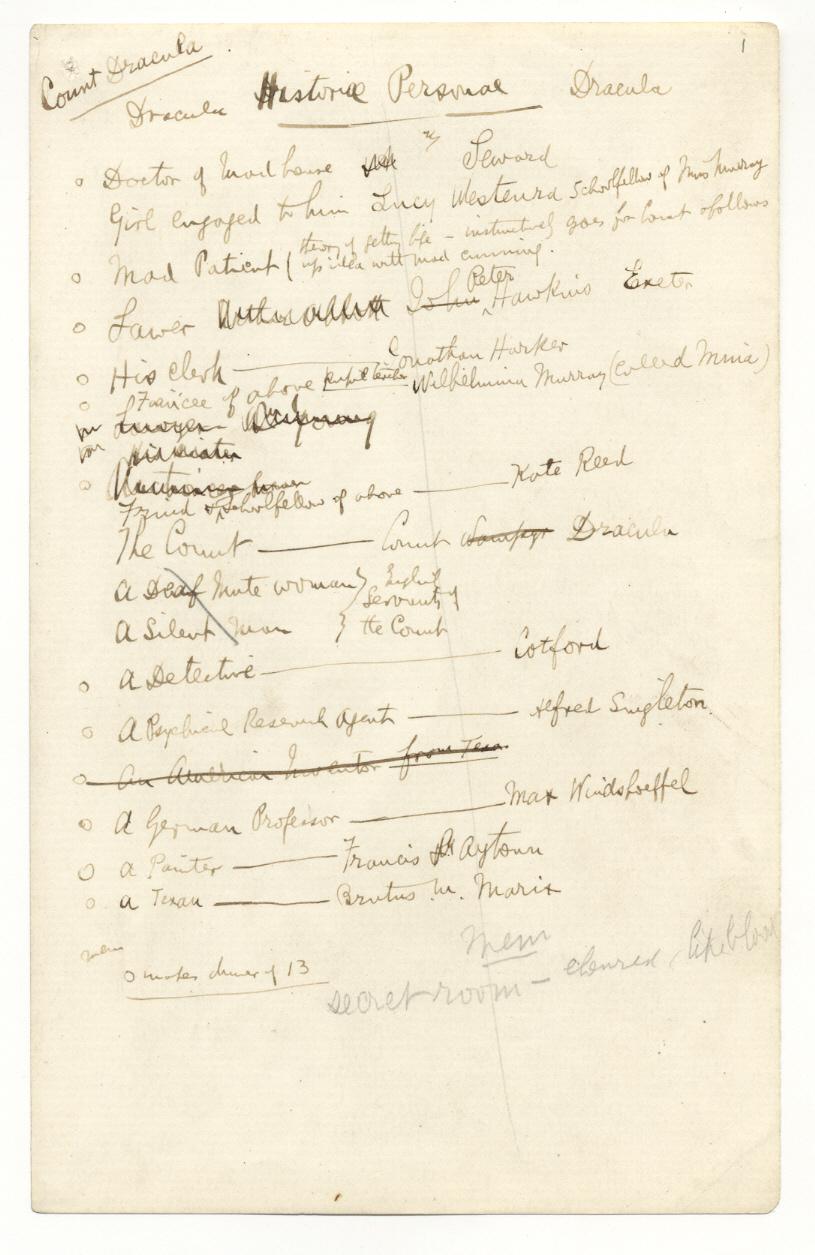The Vault is Slate’s new history blog. Like us on Facebook; follow us on Twitter @slatevault; find us on Tumblr. Find out more about what this space is all about here.
Bram Stoker, the author of Dracula (1897), returned to this page again and again while drafting his novel between 1890–1896. The sheet, labeled “Historiae Personae,” lists the narrative’s major players and shows how Stoker changed his mind about their roles and characterizations as he moved through the writing process.
In his new history of the writing of the book, Who Was Dracula?: Bram Stoker’s Trail of Blood, Jim Steinmeyer points out that later interpretations of the Dracula legend have streamlined and simplified Stoker’s novel. As this sheet shows, the narrative was a complex thing with many moving parts, drawing characters from many walks of life into the dark story.
The page shows how Stoker initially named the murderous Count “Wampyr,” the German word for vampire. Stoker discarded this idea after coming across a mention of a 15th-century Romanian warlord in a book on Eastern Europe. Steinmeyer notes that after striking Wampyr and replacing it with the new name, Stoker wrote “Dracula” across the top of the page three times, as though trying out its power.
The “German Professor,” here called Max Windschoeffel, later absorbed several other of the characters, including the detective and the “psychical research agent,” and became the Dutch vampire hunter Van Helsing. (One wonders whether the Hugh Jackman movie would ever have been made had the first name remained in place.)
One of the deleted characters, Francis Aytown, was to have attempted to paint Dracula only to find that the count’s likeness could not be transferred to canvas. The rule that vampires lack a reflection in a mirror, or can’t be photographed, is now a common trope. There’s something even creepier about the idea of a creature so unnatural as to resist all representation, whether by human or technological means.

Bram Stoker. Dracula: notes and outline, [ca. 1890-ca. 1896], page 1, Cast of characters. “Historiae Personae.” EL3 f.S874d MS. Rosenbach Museum & Library, Philadelphia.